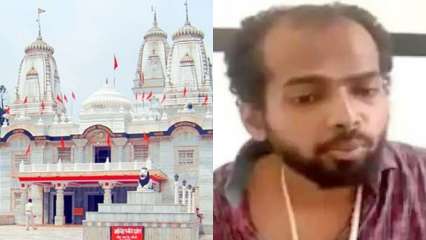A man wielding a sickle and chasing cops outside the Gorakhnath temple in Uttar Pradesh sent shockwaves through the country. The attack has striking similarities with the terror modules of Hezbollah and HAMAS of the middle-east, according to experts, who say that such terror attacks, using knifes, are common in Israel.
However, Lieutenant General Abhay Krishna (Retd.), former General Officer Commanding-in-Chief of the southwestern, eastern and central commands of the Indian Army, says that it is too early to trace this attack back to such modules in the middle-east. It also cannot be ruled out as a future trend by terrorist organizations, he added.
“There may be a possibility that the individual may have been radicalised or recruited online, like digital recruitment done by ISIS or Hezbollah. The accused, Ahmad Murtaza Abbasi, could be a potential target of these terrorist organisations for several reasons. Recruits termed as “virtual entrepreneurs” or “virtual plotters” are recruited online by terrorist organisations through social media platforms and are incited, funded and possibly trained remotely for terror acts,” Lt Gen Krishna told India Today TV.
“There might be a possibility that other vulnerable and educated youths are also being recruited online by terrorist organisations to carry out attacks on other possible targets similar to what is being done by Hezbollah in Israel. After further facts and linkages are brought to the fore by investigating agencies and after a follow-up trend of such incidents, more convincing opinions could be formed. As of now, it has come to light in the preliminary reports that the culprit was influenced by banned Islamic preacher Zakir Naik and has a possible link to ISIS. This incident could be one of the stray incidents in the wake of an outburst of one of the communities on the Hijab issue and “The Kashmir Files”,” he added.
The background of the attacker stunned investigators that an IIT graduate, with a brilliant mind, can be so radicalised.
“An educated person is the most vulnerable to mental steering if explained with logic or if his perspective about things, including any ideology, is influenced. Therefore, the doctrine followed to get these vulnerable and educated young people may be to first identify them, then use social media platforms to establish contact with such individuals, followed by forging of nascent relationships and religious indoctrination,” the army man said.
Then comes communication with prospective recruits via email and sending instructions on how to use encrypted communication platforms, including encrypted mail and instructions to minimise detection. A sleeper cell is formed by recruiting trusted and committed individuals. Potential targets, with political and religious prominence, are put under surveillance. One can presume that the Gorakhnath temple was chosen because the chief minister of Uttar Pradesh is also the chief priest of the temple and because of the role he played in the Ram Mandir case. A significant sum of money is also promised to online recruits and transferred beforehand or after committing the terror act,” he added.
The attack also raised questions about the training of the policemen, especially at constable levels, who are deployed at such crucial places.
“The police should incorporate adequate expertise, infrastructure and training of its personnel in the cyber and information warfare domain to tackle such attackers. Close coordination with sister intelligence agencies is also a must to thwart the online recruitment activities of terrorist organisations through social media platforms. Therefore, one can assume that presently the Indian police forces do not appear to be adequately trained to handle such violence due to inappropriate equipment, procedures and training. There is also a supposed communication gap and non-synergy among organisations dealing with terrorism,” Lt. Gen Krishna (Retd.) said.
“Moreover, such attacks are bound to succeed initially due to the surprise factor. However, the overall damage remains restricted due to the use of crude weapons. India’s ‘no free gun’ policy will definitely help in keeping such incidents localised and restrict the scale of damage,” he added.



